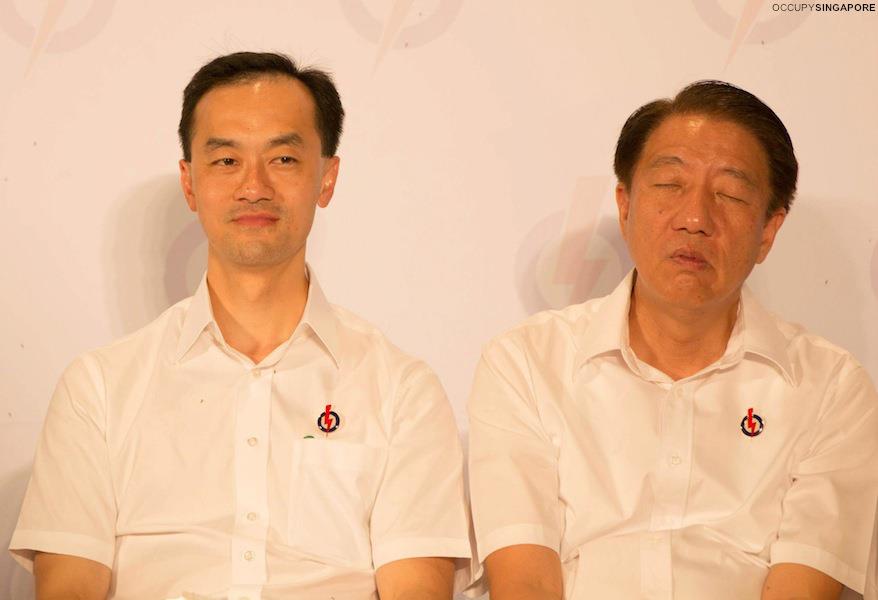 Singapore Riot Exposed Police Weaknesses, Report Finds
Rare Incident Exposed Some Of Police's Shortcomings
By Chun Han Wong
Singapore Riot Exposed Police Weaknesses, Report Finds
Rare Incident Exposed Some Of Police's Shortcomings
By Chun Han Wong
June 30, 2014 10:12 a.m. ET
SINGAPORE—A rare riot in Singapore last year exposed some shortcomings in the police's ability to tackle public-order incidents, a state-appointed panel said Monday, after a six-month inquiry into the city-state's worst outburst of public violence in more than 40 years.
The Dec. 8 riot—staged by hundreds of South Asian migrant workers angered by a fatal road accident—blotted Singapore's image as one of Asia's safest countries. The riot stoked public concern about the sustainability of the island state'
s heavy reliance on overseas labor. It also prompted officials to launch an inquiry into what caused the violence and how it was handled.
In a 75-page report, a committee of inquiry said it found that the Singapore Police Force had responded to the riot "relatively swiftly and efficiently," but also
committed "several lapses" in how it dealt with the violence, which took place in the city-state's ethnic Indian district.
These lapses included a
"communications failure" that prevented police commanders from marshaling scattered officers, as well as decisions taken by officers to prioritize dispersing the rioters over making arrests, the four-member committee said.
"The
training and equipping of [police] officers to deal with public order incidents have to be improved," the committee said in its report. "There is also much room for improvement in communications, as it was plain that the communications failure materially affected the ability of the commanders on the ground to act."
Even so, the committee believed that the lapses "were an aberration and do not reflect a serious and systemic defect in the police force as a whole."
It also
recommended that the police increase its manpower and cut red tape in its chain of command, among other steps.
In response to the report, Deputy Prime Minister
Teo Chee Hean said the Home Affairs Ministry—which oversees the police—and the Manpower Ministry
will study the committee's findings and recommendations, before offering their responses in Parliament on July 7.
The riot—which took two hours to quell—caused injuries to more than 60 people, including law-enforcement and emergency-services personnel, as well as members of the public. Dozens of police, emergency-services and privately owned vehicles were damaged.
Authorities later filed criminal charges against 25 people for their roles in the riot. Some have been convicted and are serving jail sentences, while the others' cases remain pending in court. Officials also deported another 57 people and issued warnings to more than 200 others.
The committee said it found that the primary cause of the riot was the fatal accident in which a 33-year-old Indian national was hit and killed by a bus.
"A confluence of other contributory factors fueled [the riot's] escalation," including cultural and psychological factors in the crowd, and the consumption of alcohol by some rioters, it said.
"Foreign workers' employment and living conditions were not the cause of this riot, [though] this is not to say a riot may never occur on this basis," the report said.
Nonetheless, the committee acknowledged some shortcomings in how Singapore manages its foreign workforce. It recommended policy changes aimed at better protecting migrant workers' rights and improving their accommodation.
About 1.32 million foreigners, including nearly one million unskilled laborers who take up menial jobs usually shunned by citizens,
work in this country of 5.4 million people. South Asian migrants, who number in the hundreds of thousands, dominate low-wage sectors like construction and shipbuilding.
Since the riot, authorities have taken several steps to improve security in Little India, an ethnic enclave in eastern Singapore where South Asian expatriates and migrant workers typically gather in the thousands on weekends.
The measures include curbs on the sales and consumption of alcohol in the area, the deployment of more armed police and private-security officers on weekends, and the installation of new surveillance cameras.
Officials and residents have credited the stiffened security for restoring calm to Little India, though some businesses have complained of reduced revenues. Labor activists, meanwhile, said the measures could deepen social fissures between citizens and the legions of low-wage foreign workers that underpin this Southeast Asian economy.




